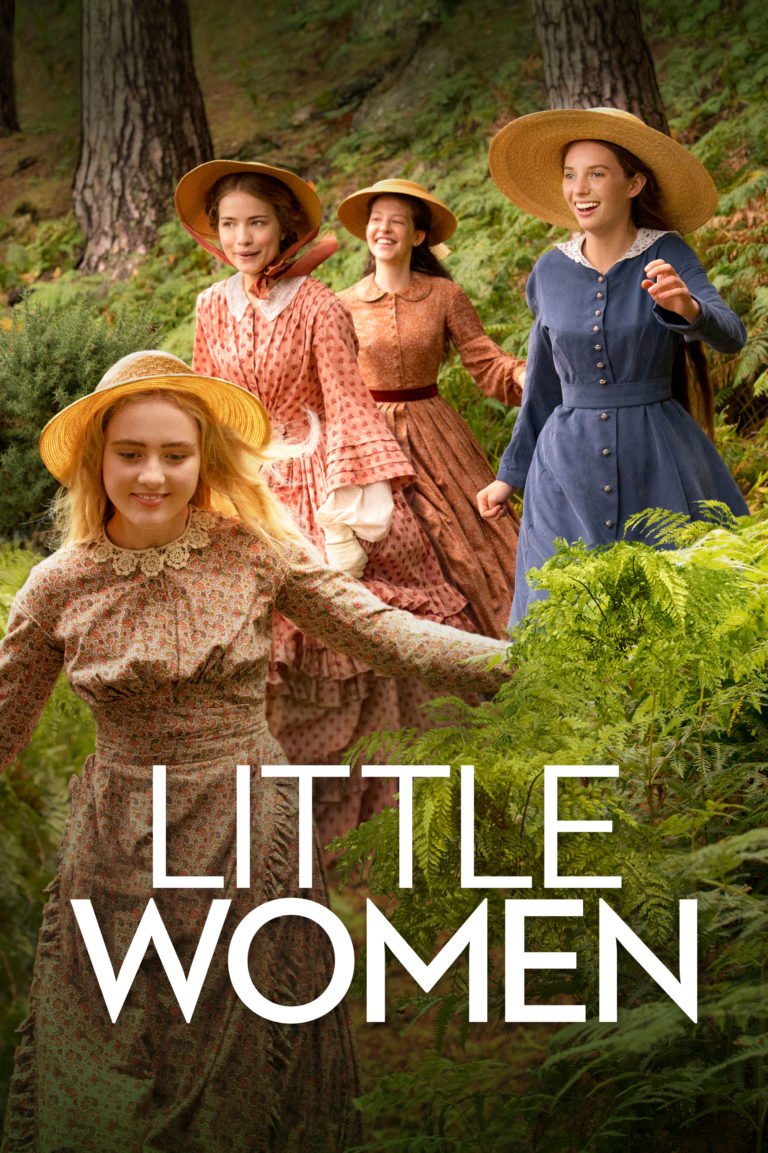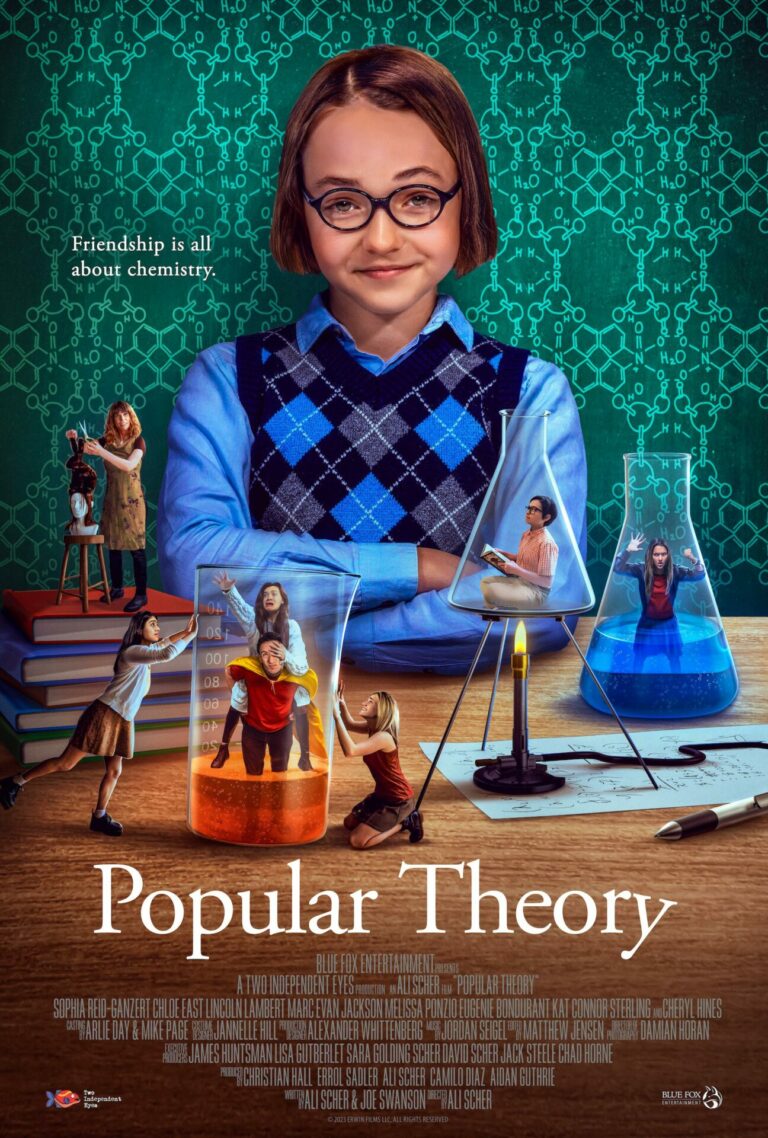“Fellowship Brings Joy”

| None | Light | Moderate | Heavy | |
|---|---|---|---|---|
| Language | ||||
| Violence | ||||
| Sex | ||||
| Nudity |
What You Need To Know:
POPULAR THEORY is winsome and hilarious. The two young leads are adorable together. The movie teaches lessons about the proper use of science, being part of a family, friendship, and doing the right thing. POPULAR THEORY is mostly wholesome. However, one rude student uses a strong profanity when he becomes exasperated with another student. Also, POPULAR THEORY that high school girls are interested in high school boys and vice versa, but not in a salacious way. Finally, the heroine makes two references to Darwin’s theory of the survival of the fittest, in relation to the social atmosphere in high school.
Content:
Strong moral worldview overall stresses family, making an effort to get along with other people (heroine quotes Physicist Erwin Shrödinger who supposedly said, “Subatomic particles have no meaning as isolated entities”), doing the right thing, and friendship, but there are two references to Darwin’s theory of the survival of the fittest, used in relation to the different cliques in high school;
No obscenities, one strong profanity using the name Jesus, and 4 light profanities such as OMG;
Some comic violence such as teenager deliberately knocks comic books out of a nerdy teenager’s hands, two teenagers become obsessed with being popular and pour water over heroine’s head and threaten to tear up a keepsake poster from her mother to get her to tell where she’s hidden a valuable object, school athletes have tied up a nerdy teenager who tried to boss them around to a goalpost after taking off his shirt and pants, a mob of people chase a character down the street and across a high school football field and into a building and through a building;
No sex, but girls are interested in boys and vice versa in the movie’s high school setting, but not in a salacious way, and a teenage boy kisses a teenage girl in the hallway at school in one shot;
Brief upper male nudity;
No alcohol use;
No smoking or drugs; and,
Brief lying but backtracked immediately, and high school students are sometimes rude and call other people names.
More Detail:
Young Erwin Page is a 12-year-old scientific genius, but her intelligence has come at a price. She doesn’t have any friends in high school and even her sister, Ari, thinks she’s a social leper.
On her birthday, her father, Arthur, gives her a poster of Erwin Schrödinger, the physicist, that her late mother had in her office. Erwin’s father tells her that Schrödinger was her mother’s favorite scientist and that she named her after him.
One day, her Aunt Tammy, who helps her brother, Arthur, with his daughters and the household, catches Erwin talking to the poster. Already concerned that Erwin doesn’t have any friends and keeps to her room, Tammy removes all the science stuff from Erwin’s room, and she and Erwin’s father ban all science from the house.
At school, Erwin faces another challenge. The new boy at schools happens to be a 13-year-old scientific genius, named Winston, and the two begin a rivalry to win the upcoming Science Fair, which offers the winner a summer science scholarship at a prestigious college.
One day, however, Winston sneaks a look at Erwin’s notes for her Science Fair project. She plans to create a formula for a gum filled with a pheromone that will make the chewer extremely popular. Winston points out to Erwin that she will need to use chemistry, and he’s the chemistry exert while she prefers physics. He also points out a flaw in her chemical equation. So, Erwin agrees to be partners on the project.
Working secretly in Erwin’s room, the two young scientists develop the gum, but they need two test subjects, a male and a female. They pick an awkward girl who desperately wants to be friends with the popular girls at school and a nerdy boy who loves comic books and dresses like Batman’s ward, Robin, but who even gets shunned by the other two boys in the comic book club.
Comical complications ensue when the two test subjects become addicted to their newfound popularity, and it goes to their heads.
POPULAR THEORY is winsome and hilarious. Sophia Reid-Ganzert and Lincoln Lambert are adorable as the two young scientists, Erwin and Winston. Cheryl Hines, Marc Evan Jackson and Chloe East are great as the aunt, faither and sister. Lessons are learned about the proper use of science, being part of a family, finding friends, and doing the right thing. People need friends, the heroine concludes after her comical misadventures. She quotes her idol, Shrödinger, who supposedly said, “Subatomic particle have no meaning as isolated entities.” Also, when Erwin and Winston offer the popularity gum to the comic book guy, he at first ponders the great moral responsibility having such a power confers. Later, however, the power goes to his head.
POPULAR THEORY is mostly wholesome. However, one rude student uses a strong profanity when he becomes exasperated with the nerdy comic book teenager who thinks Robin is the most powerful comic book character. Also, the movie acknowledges that high school girls are interested in high school boys and vice versa, but it doesn’t do so in a salacious way. Finally, the heroine makes two references to Darwin’s theory of the survival of the fittest, in relation to the atmosphere among high school students.
So, MOVIEGUIDE® advises some caution, mostly for pre-teen children.


 - Content:
- Content: 
